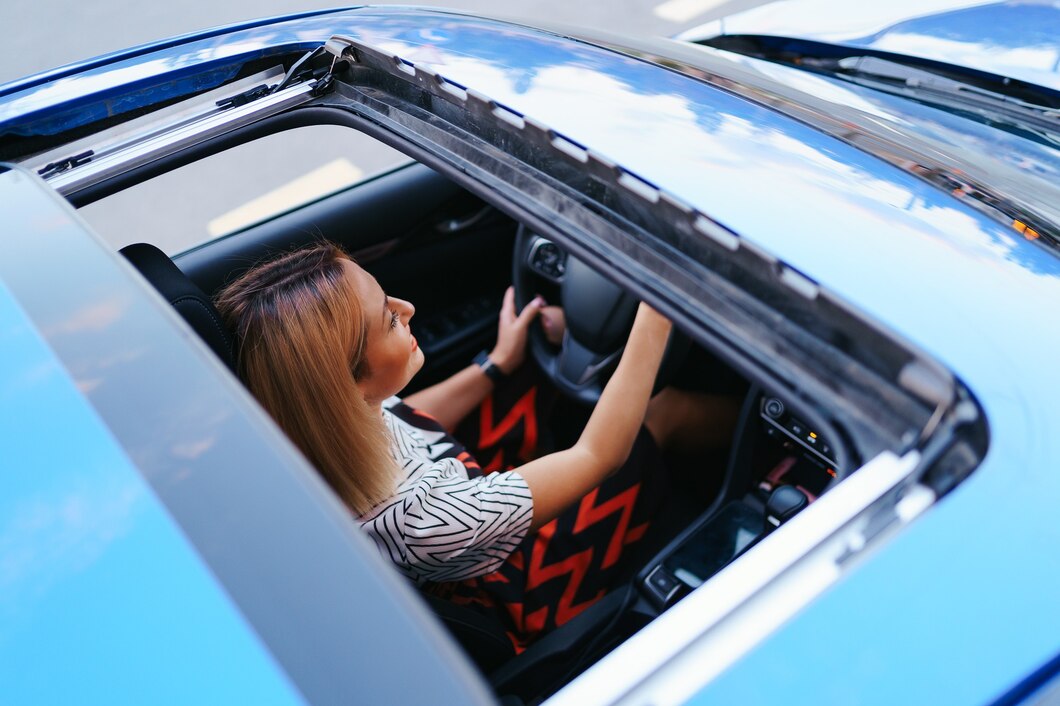A sunroof is a popular feature in many vehicles, providing a sense of openness and ventilation. However, if not properly maintained or if there are underlying issues, it can become a source of leaks, leading to interior damage and discomfort. Recognizing early signs of a potential sunroof leak is crucial for preventing costly repairs and preserving your car’s interior. Here are key indicators to watch out for:
1. Dampness or Water Stains
One of the clearest signs of a sunroof leak is dampness or water stains on the headliner, seats, or carpeting near the sunroof area. Even a small leak can gradually cause water to seep into the interior, leading to mold, mildew, and unpleasant odors.
2. Visible Water Droplets or Streams
After a rain shower or car wash, check the interior of your car, particularly around the edges of the sunroof and on the headliner. Water droplets or streams trickling down from these areas indicate that water is finding its way past the seals or drainage channels of the sunroof.
3. Unexplained Wetness
If you notice wet spots or moisture in areas not directly beneath the sunroof, such as the door panels, pillars, or even the floor mats, it could be a sign that water is leaking from the sunroof and traveling along hidden paths inside the vehicle’s structure.
4. Musty Odors
Accumulated moisture from a sunroof leak can lead to the growth of mold and mildew. If you detect a musty or moldy smell inside your car, particularly after rain or humid weather, it’s likely that water ingress from the sunroof is causing interior dampness.
5. Sagging Headliner
A sagging or discolored headliner, especially near the edges of the sunroof opening, can indicate water damage. The headliner material absorbs moisture, causing it to lose its shape or integrity over time.
6. Difficulty Closing or Sealing
If you notice that your sunroof doesn’t close properly or requires extra force to seal shut, it may indicate misalignment or damage to the seals. This can create gaps through which water can penetrate during inclement weather.
7. Rust or Corrosion
Over time, prolonged exposure to water can lead to rust or corrosion on the sunroof frame or surrounding areas. Inspect the edges of the sunroof opening and surrounding trim for any signs of rust spots, which can indicate chronic water exposure.
8. Sunroof Drainage Issues
Sunroofs are equipped with drainage channels designed to carry water away from the vehicle. If these channels become blocked or clogged with debris, water may overflow and leak into the interior instead of draining properly.
What to Do If You Suspect a Sunroof Leak:
If you notice any of these signs, it’s important to take action promptly to prevent further damage:
- Inspect and Clean: Regularly inspect the sunroof seals, drainage channels, and surrounding areas for debris or signs of wear. Clean out any dirt or debris that could obstruct proper drainage.
- Professional Inspection: If you suspect a leak but are unsure of the cause, consult a professional automotive technician. They can diagnose the issue accurately and recommend necessary repairs or maintenance.
- Address Seal and Drainage Issues: Ensure that sunroof seals are intact and in good condition. Replace any damaged seals promptly to maintain effective water resistance.
By addressing potential sunroof leak issues early on, you can protect your car’s interior from water damage and maintain the comfort and enjoyment of your driving experience. Regular maintenance and proactive inspection are key to keeping your sunroof functioning properly and leak-free.











